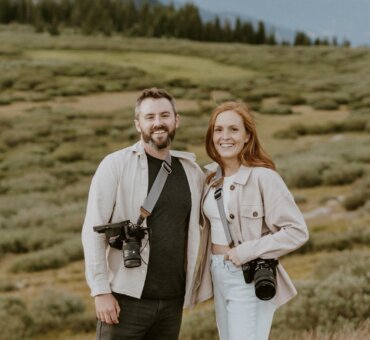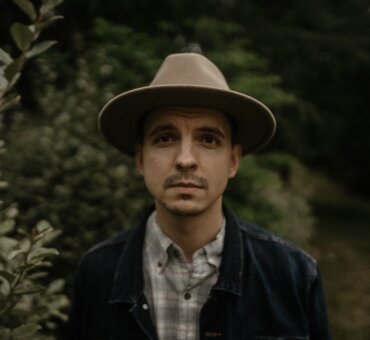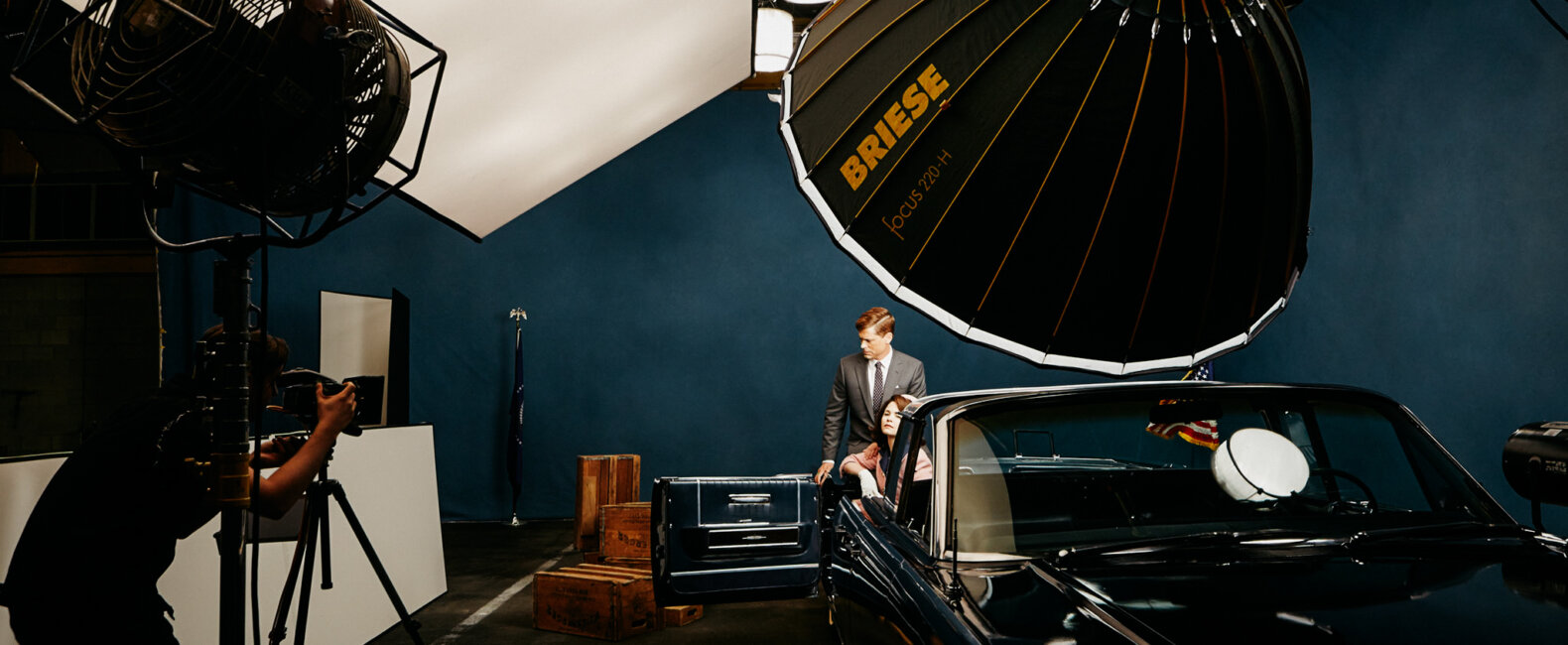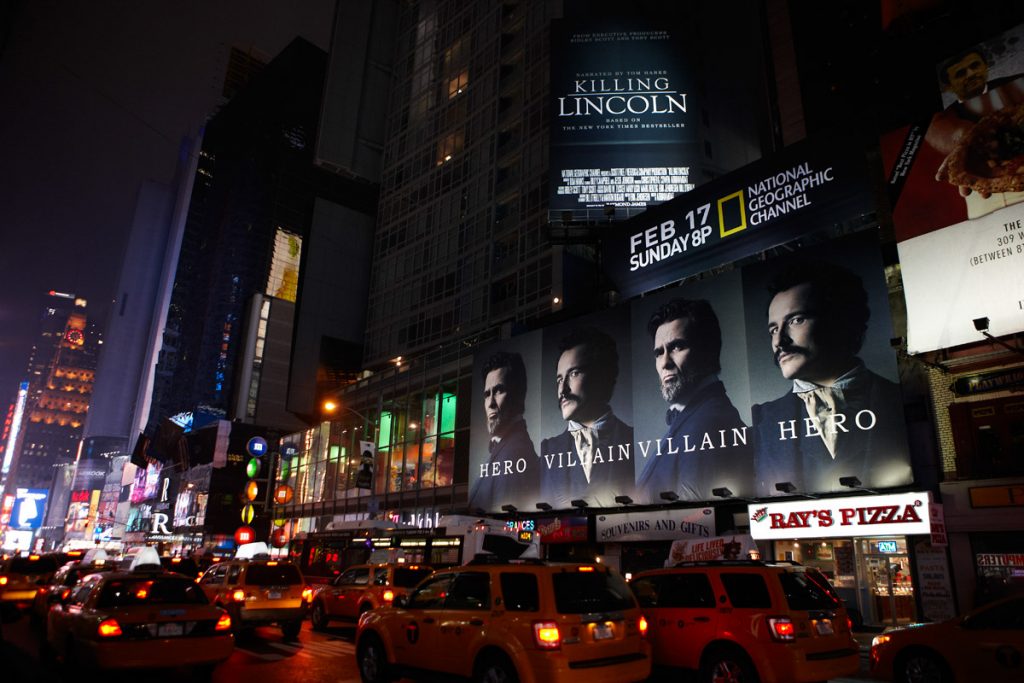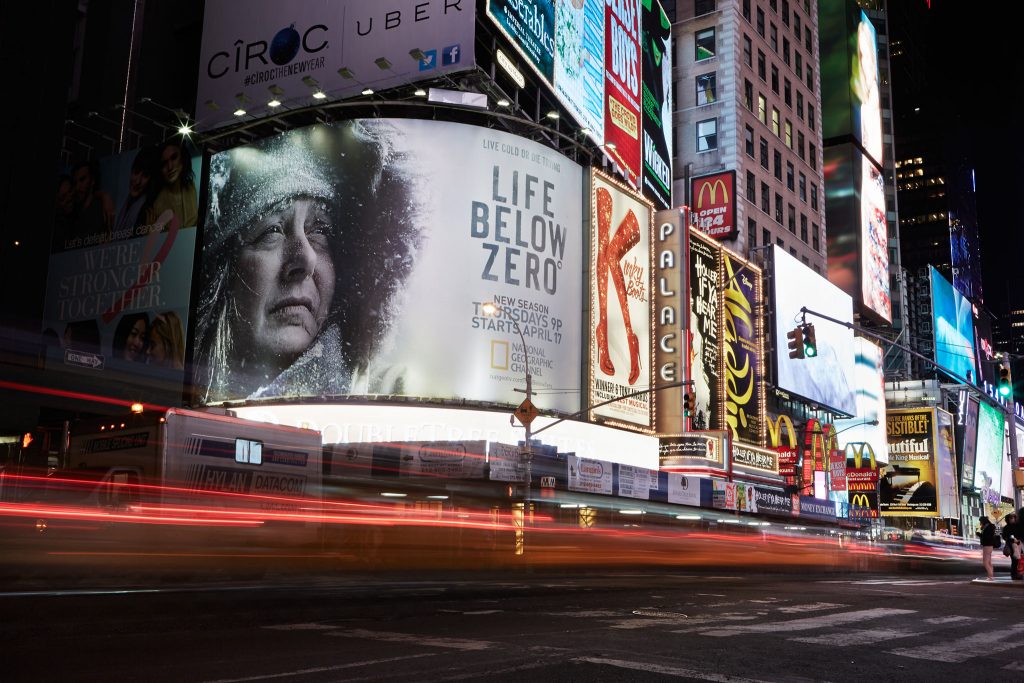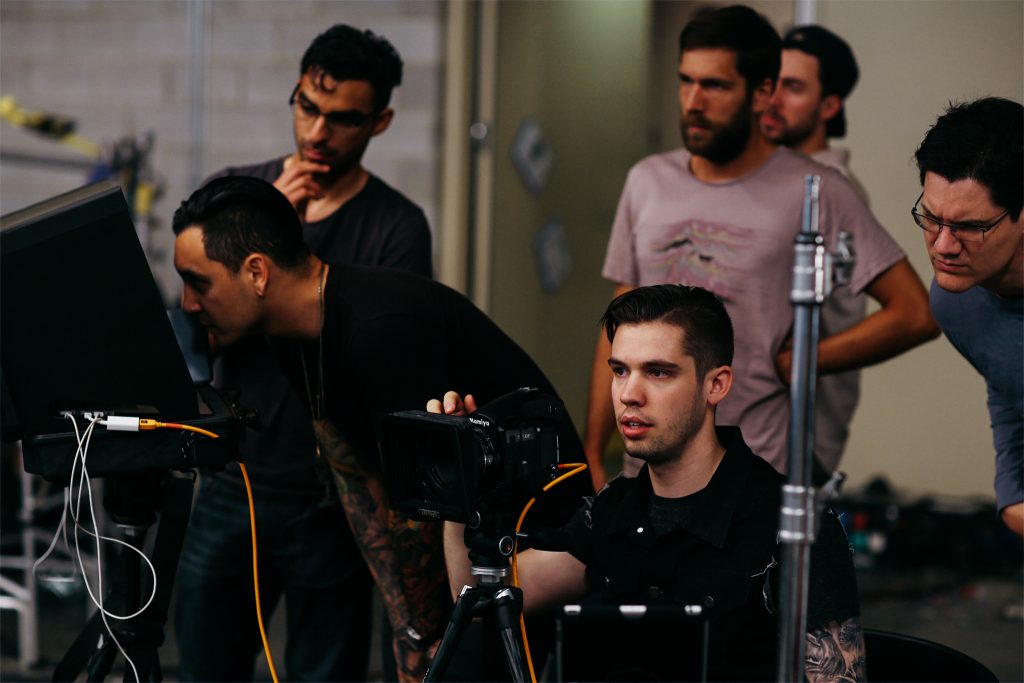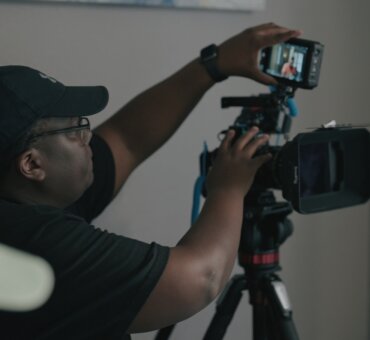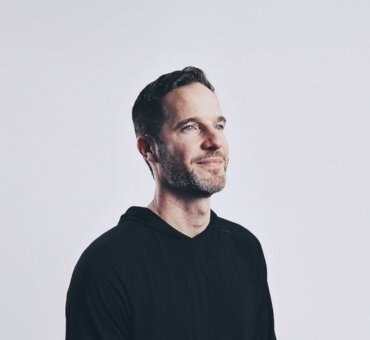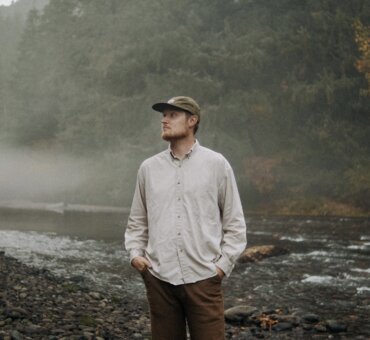For most creatives, healthy working relationships are a rare gift. There’s a lot working against us: Egos. Pressure. Deadlines. Differences of opinion and taste. And yet we can’t help noticing that some of the best work being done today is being done by people who genuinely like each other. A great example of this is National Geographic Channels SVP/Group Creative Director Andy Baker and one of his go-to photographers, Joey L.
We recently got them both on the phone to try to untangle their relationship, see what goes on behind the scenes. Over the past few years, these two have not only managed to produce some truly spectacular work (seriously, check out the photos below), but they’ve also become friends. It’s what you might call the best of both worlds.
Here’s an inside look at a healthy, productive working relationship.

Are you guys ready to dive into the depths of your relationship?
Andy Baker: Yeah.
Joey L.: Yes.
So tell me how you first met. What’s the origin story?
AB: We found Joey while working on a project called Taboo. The crew at the production company Variable introduced us to him, and we thought, Well, this is great. There is already a working relationship between the video team and the photo team. He’ll work really organically with the rest of the crew. That campaign went really well, so we kept hiring Variable to do video shoots and Joey to do the photography. We ended up forming really good friendships.
JL: I work with Variable a lot and one thing we do really well together is combine video promo shoots and still photography shoots. In the past, a lot of clients viewed them under different umbrellas, but we’ve found it makes more sense to do it collaboratively, on the same shoot. Taboo was one of those early experiences of doing that.
I think though, Andy and I actually started getting to know each other on the next shoot, for a show called Are You Tougher Than a Boy Scout? And I think the reason we got to know each other so well is because instead of staying in hotel rooms, we rented this huge house in the woods where we were shooting.
AB: It was like a retreat. We shot mostly in the mornings and evenings because that’s when the light was best, so we had a lot of downtime in the afternoons. There were no other distractions, and we were just in this house in the middle of nowhere. So that’s when I got to know Joey pretty well.
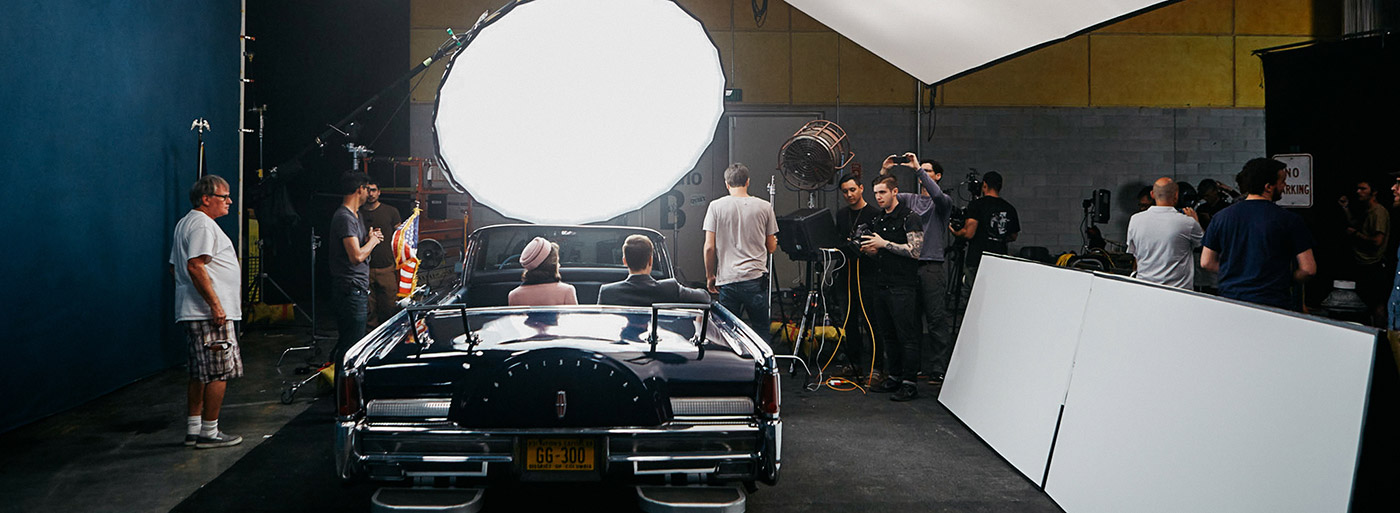
“It requires working with people you can be friends with.”
Was it hard to let your guard down with one of you being the client and one of you being the creative?
JL: There is a movement I’ve felt recently with my newer clients, where you can hang all of that stuff up. Hang up your ego, I mean. Andy is a very hands-on client, which can be a good thing or a bad thing. If you have a hands-on client with poor taste, it’s a bad thing. But having Andy as a hands-on client is a good thing. For me, as a photographer, the best situation is when I have a client I can learn from, when his or her advice enhances the final product. Andy has been doing ads for years and years. I’ve learned more about key art and posters from working with Andy than anybody else.
AB: Thanks, man. I work really hard at being respectful of boundaries. I am pretty hands-on, like Joey said; but I also want to make sure the creative process is respected. That’s the balance. I want to be known as a client that creative people — photographers, directors, DPs — want to work with. I want to be known as a client who gives them the opportunity to make great work.
But the flip side is that I like to work with people who are collaborative and open, not just like, “You go sit over there in that corner.” That requires working with people you can be friends with. People you can have honest conversations with along the way. I think that makes for great work. I agree with Joey: the industry is shifting in that direction. It’s getting a lot more collaborative.
JL: That whole “isolated client” thing comes from a different era of filmmaking and photography. Andy and his colleagues know what they’re talking about. I prefer working with people like that, as opposed to not having any direction at all. And Andy, I would say you know your place. If I’m like, “Let me try this out,” it will happen. You don’t try to control every detail.
A lot of that must come down to hiring talented people.
AB: It’s about hiring talented people, sure. But it’s also about hiring talented people who don’t have big egos about being talented. There are a lot of super talented people out there who are like, “Stay away — I’m going to make you a beautiful piece of art.” And that can be great. But I like to be more involved than that. And I’m lucky to have the best team in the world at National Geographic. I have incredible writers on my team, incredible designers and producers. Just unbelievably great and talented people.

How important is it for you guys to like each other?
JL: On any set, you are under a significant amount of pressure. If you get along with people, you are going to be able to handle that pressure a lot better. Now you’re on the same team. You have this task to create something. It becomes this interesting challenge rather than this obstacle.
AB: I think, too, that having a good friendship means you can be really honest. If we’re in a high-pressure situation and Joey is talking about shooting something that I know we are never going to be able to use, I feel very comfortable just being like, “Let’s move on because I know we’ll never need that.” That might rub someone the wrong way; but because we’re friends, it’s like, “Okay, cool. I trust Andy and he’s being honest, so let’s move on to the next thing.” That’s the benefit of having a friendship: you can be really honest and not worry about egos getting involved.
JL: Both of us always say, “Just tell me if it sucks or not.” I critique some of Andy’s work, in the most positive way. And Andy picks apart the things that I do. I really appreciate that because it’s my livelihood. It’s my craft. It’s what I want to get better at. It’s like, if you can ask the creative director at Nat Geo for advice, that’s pretty damn cool.
AB: And on the flip side, I’ve learned so much from Joey, too. He’s an incredible creative sounding board for me. If you can ask a world-class photographer for advice, that’s also pretty damn cool.
Has building a healthy working relationship been intentional or has it happened organically?
AB: I think it happened organically, just from working together multiple times. But I do have this policy, whether I’m hiring in-house or externally: I don’t like to work with assholes. When you don’t — and you try not to be one yourself — the natural end result is that everyone gets along. Everyone is there for the same reason and everyone has fun.
Ultimately, we are lucky to be doing what we do. It’s really fun to make posters and billboards that go up in Times Square. That’s ridiculously fun to do. And we are all extremely fortunate to do this and get paid for it. So let’s all have fun. When you carry that vibe, and your team carries that vibe, other people want to be a part of that. Good vibes build friendships. Then you can be more honest with each other, and the work gets better. It all builds on itself.
“It’s just better to be humble.”
Why aren’t you guys assholes? You both easily could be.
AB: Oh boy. Life is too short, I guess. I don’t know. Maybe my mama raised me right? I’m pretty optimistic. I naturally see the good in things. And I find that life is a lot more fun when you’re happy and you listen.
JL: I’ll tell you a quick mom story. When I first started working as a photographer, I was really young and I was going around to all of these places and doing all this stuff. I was still living at home in a really small town in Ontario. I remember getting in some kind of argument with my mom, and — I’ll never forget it — she goes, “You’re becoming like one of those L.A. guys.” That destroyed my ego so much because I never wanted to become that. I remember that moment to this day. If I ever start to hear those voices in my head that say, You’re awesome! You can do anything! I’m like, No. Mom will think I’m becoming an L.A. guy.
Also, I look up to people who are kicking ass. I prefer to look up to people rather than down on anyone. There’s always someone better than you.
AB: It’s so true. It’s just better to be humble.
Has it gotten easier to work together as you’ve become friends?
AB: In some ways. But there is still a lot of preproduction time spent making sure we are on the same page before going into a shoot. I remember we had a shoot last year for a show called Life Below Zero. We were doing solo portraits of this character from the show, and we talked a lot about what we wanted it to be. How cold we wanted it to feel. We even talked about the size of the snowflakes we were going to use. I said, “I don’t want it to feel like a snow globe. I don’t want it to be ‘snow globey’ with these big fat snowflakes. I want it to feel cold and harsh.” We all laughed about how specific that note was, but it helped Joey get into that mind-set of making this cold and harsh. I wasn’t able to be on the shoot, but we had talked about it so much in preproduction that I had no doubt we were on the same page.
JL: We still use the term “snow globey” to mean something that looks overproduced, overlit, overprocessed. Because if the snowflakes were too big, it would actually mean the temperatures were warm, since large snowflakes form in warm weather.
AB: It’s true. It’s a scientific fact.

“There was this moment of ‘What are we going to do?’ But it was immediately followed by, ‘Let’s solve it together.’”
How would you boil down what your relationship is all about?
AB: There’s this one photo of Joey and me where he’s got his laptop out and we’re looking at the scene in front of us. It was the day before we shot the talent for Killing Kennedy, and we were trying to figure out what perspective we wanted to shoot this huge car from. I remember we spent like 45 minutes standing at different angles around the car. The car was really long and it wasn’t looking good. There was this moment of What are we going to do? But it was immediately followed by, Let’s solve it together.
That’s the spirit we try to have. Working together. Solving problems as creative partners. Joey has been a great creative partner on a lot of projects, whether it’s something we’ve hired him for, or I’m just getting his feedback on an idea or even my blog. That photo is a great example of that. It’s like, let’s just sit here and stare at this until we’ve solved it together.
We believe there is more to creativity than just what you make. We believe how you make it — and who you make it with — also matters. Building good working relationships isn’t easy, but we’re convinced it will make your work (and your life) that much better.
If you’re interested in gleaning some more insights about healthy working relationships, check out Andy Baker’s Client Blog. And if you’re interested in looking at really, really pretty pictures, here’s more of Joey L.
ABOUT THE SUBJECTS:
Andy Baker is Senior Vice President and Group Creative Director for National Geographic Channel and Nat Geo WILD. Follow him on Twitter.
Joey L. is a commercial photographer, director and published author based in Brooklyn, New York. Follow him on Twitter and Facebook.





































































